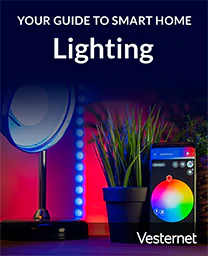LightingUpdated a year ago
The transition from standard lighting to smart lighting systems has become increasingly popular as homeowners seek to enhance their living environments with automation and innovative technology. Standard lighting often consists of basic controls such as turning lights on and off and dimming options which can feel rather mundane and limiting. Smart lighting brings a new level of sophistication, allowing users to tailor their lighting environments based on individual preferences and activities. This guide delves into the numerous advantages of smart home lighting, offering ideas for implementation and practical advice for those interested in making the switch.
Smart home lighting not only adds convenience and comfort to daily routines but also enhances energy efficiency and security. By automating lighting controls, homeowners can ensure that lights are only on when needed. Simple functions such as automatically turning off lights in empty rooms or adjusting brightness throughout the day can lead to significant energy savings. Moreover, homeowners may experience reduced utility bills from implementing smart lighting solutions, making the initial investment worthwhile, especially during times of soaring energy prices.
Installation of smart lighting systems is often much simpler than expected, with options for gradual integration into existing setups. For example, replacing regular bulbs with smart LED bulbs or connecting lamps to smart sockets can take mere minutes. Smart lighting systems typically come with mobile applications, enabling users to manage their home lighting directly from smartphones, tablets, or computers. Voice-controlled systems, like those compatible with Alexa or Google Assistant, further enhance user convenience, allowing for effortless verbal control over lighting scenarios such as movie nights or morning wake-ups.
Once established, smart lighting setups can operate automatically based on defined schedules, sensor inputs, or the presence of household members. These systems can contribute to security by mimicking occupancy patterns when the home is empty or activating outdoor lights in response to motion detection. Advanced smart lighting solutions may even utilize machine learning to adapt based on lighting preferences and behaviors, effectively tailoring the lighting experience to individual lifestyles.
For those interested in exploring this technology, it is essential to consider the various types of smart devices available. From smart bulbs and switches to integrated lighting controls, each device serves a unique purpose that can be tailored to specific needs. Homeowners can start with simple plug-and-play options and progressively upgrade to more complex systems involving direct wiring and programmable controls. The potential of smart lighting extends beyond aesthetics; it creates a more comfortable, energy-efficient, and secure living environment, making it a worthwhile investment for the modern home.
